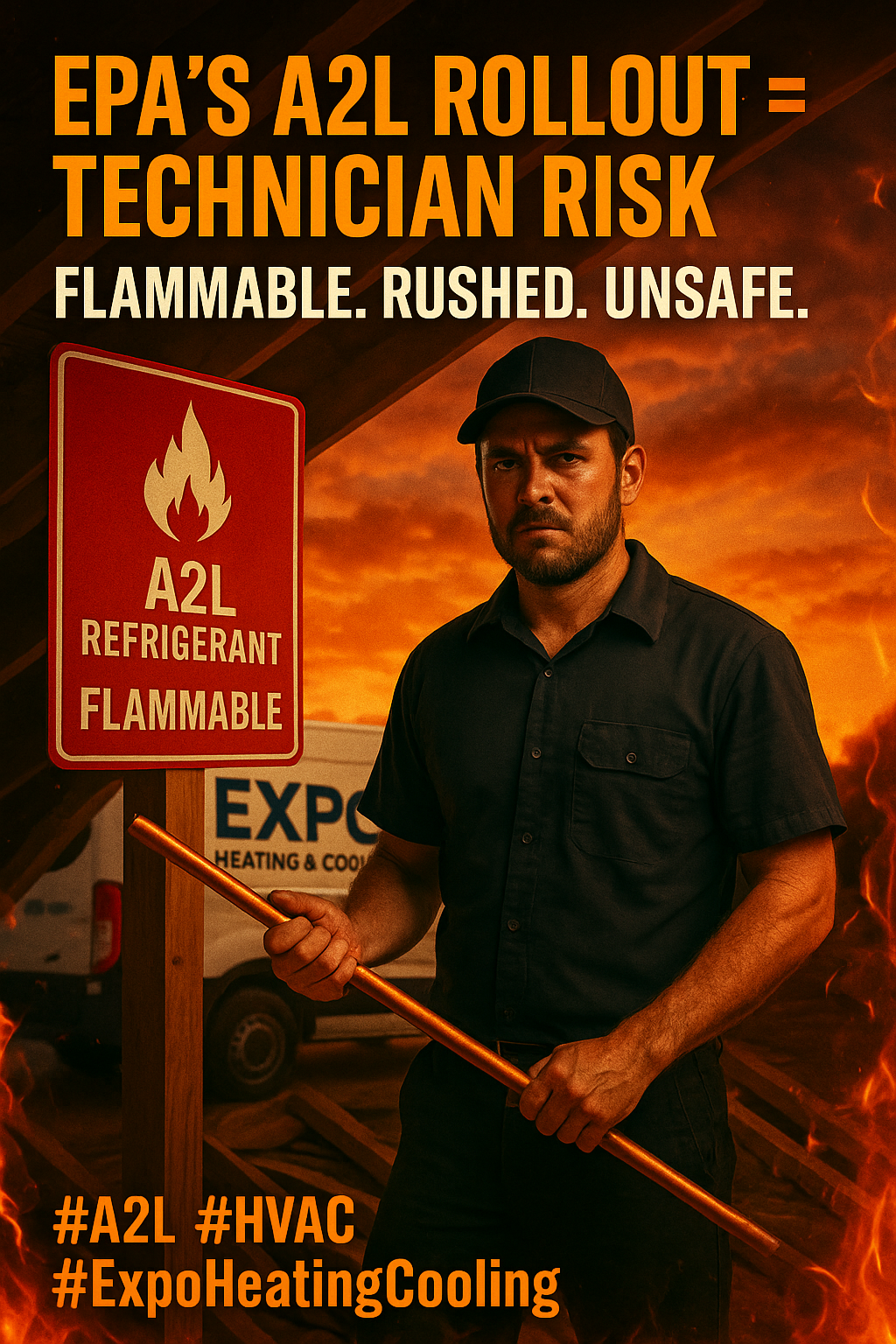
As the HVAC industry undergoes significant changes leading up to 2025, homeowners must stay informed about the impending shift from R-410A to R-454B refrigerant. This transition is more than just a technicality; it impacts your home's heating and cooling efficiency, safety, and environmental responsibility. The phase-out of R-410A is driven by regulatory measures aimed at reducing the Global Warming Potential (GWP) of refrigerants, making it essential for homeowners in Spring, The Woodlands, and Greater Houston to understand how these changes affect their systems.
In this blog post, we will dive deep into the ins and outs of R-410A vs. R-454B: What Homeowners Need to Know About the New Refrigerant Shift. We’ll explore the reasons behind R-410A’s phase-out, the numerous benefits that R-454B offers, and provide essential tips for navigating this transition. Whether you're contemplating a new HVAC system or simply want to ensure your existing setup is compliant with the latest standards, understanding this refrigerant shift is crucial for maintaining a comfortable and sustainable home environment.
Understanding the R-410A phase-out: Why homeowners should pay attention
As of 2025, the phase-out of R-410A refrigerant marks a significant shift in the HVAC industry that homeowners cannot afford to ignore. This refrigerant, favored for its efficiency and ozone-friendly properties, has been a staple in residential and light commercial cooling systems for more than 20 years. However, due to its high Global Warming Potential (GWP) of around 2,088, regulatory pressures drive manufacturers to seek out more environmentally responsible alternatives. Homeowners in areas like Spring, The Woodlands, and Greater Houston should stay informed about how this transition will impact their heating and cooling systems to ensure compliance with upcoming regulations and maintain system efficiency.
The decision to phase out R-410A is not just about environmental concerns; it also affects the long-term viability of older HVAC systems. As the industry turns to newer refrigerants such as R-454B, homeowners will need to consider the costs associated with replacing their existing systems or upgrading components. Understanding the implications of this refrigerant shift will empower homeowners to make informed decisions regarding their HVAC systems, from selecting the right unit to hiring qualified technicians experienced in handling A2L refrigerants. By doing so, homeowners can ensure their homes remain comfortable, safe, and compliant with new standards.
The benefits of R-454B: What every homeowner needs to know
R-454B offers significant advantages over R-410A, especially when it comes to environmental impact and efficiency. With a Global Warming Potential (GWP) that is approximately 78% lower than R-410A, R-454B aligns with greener practices and regulatory requirements aimed at reducing the overall carbon footprint of HVAC systems. This not only contributes to a healthier planet but may also enhance the resale value of your home as environmentally friendly features become more desirable.
Moreover, R-454B is designed to operate more efficiently in newer systems, leading to potential energy savings on your monthly utility bills. When combined with advanced HVAC technologies, R-454B can deliver improved cooling performance and comfort levels compared to older refrigerants. Therefore, upgrading to a system that uses R-454B can yield long-term benefits, making it a smart choice for homeowners looking to invest in a sustainable and cost-effective solution for their cooling and heating needs.
Navigating the transition: Essential tips for homeowners facing the R-410A to R-454B shift
As homeowners prepare for the transition from R-410A to R-454B, it’s essential to stay informed and proactive. First, evaluate the age and efficiency of your current HVAC system. If your air conditioning or heat pump is approaching the end of its lifespan, consider upgrading to a unit designed to use R-454B. This not only ensures compliance with future regulations but also offers the opportunity to benefit from improved energy efficiency and lower operating costs. Ensure your HVAC contractor is well-versed in handling the new refrigerant and can provide you with a safe installation according to current standards.
Additionally, familiarize yourself with the implications of R-454B’s mildly flammable classification. Homeowners should confirm that their technicians have the proper A2L training and understand the necessary safety protocols for handling this refrigerant. Proper ventilation and leak detection systems are crucial, so discuss these aspects with your contractor to ensure your home remains safe and comfortable. Being proactive about the shift to R-454B can prepare you for a successful transition and peace of mind for years to come.
If your AC system is nearing the end of its life, now is a good time to plan ahead. Choose an installer that’s experienced with R-454B and understands both the benefits and the responsibilities that come with it.
Need help navigating the R-410A to R-454B transition?
📞 Call Expo Heating & Cooling at 346-445-6224 or visit www.expoheatingcoolinginc.com for expert advice and safe AC installation in Spring, The Woodlands, Cypress, Tomball, and Conroe.
Expo Heating & Cooling provides expert AC installation and repair in Spring, TX and surrounding areas including The Woodlands, Conroe, Tomball, Cypress, Magnolia, and Houston. From same-day AC repairs to full system replacements with Carrier, Trane, and more — we deliver fast, honest, and professional HVAC service. We offer free estimates, $0 diagnostic with repair, and 0% financing on new installs. Call now to schedule service with a local team you can trust